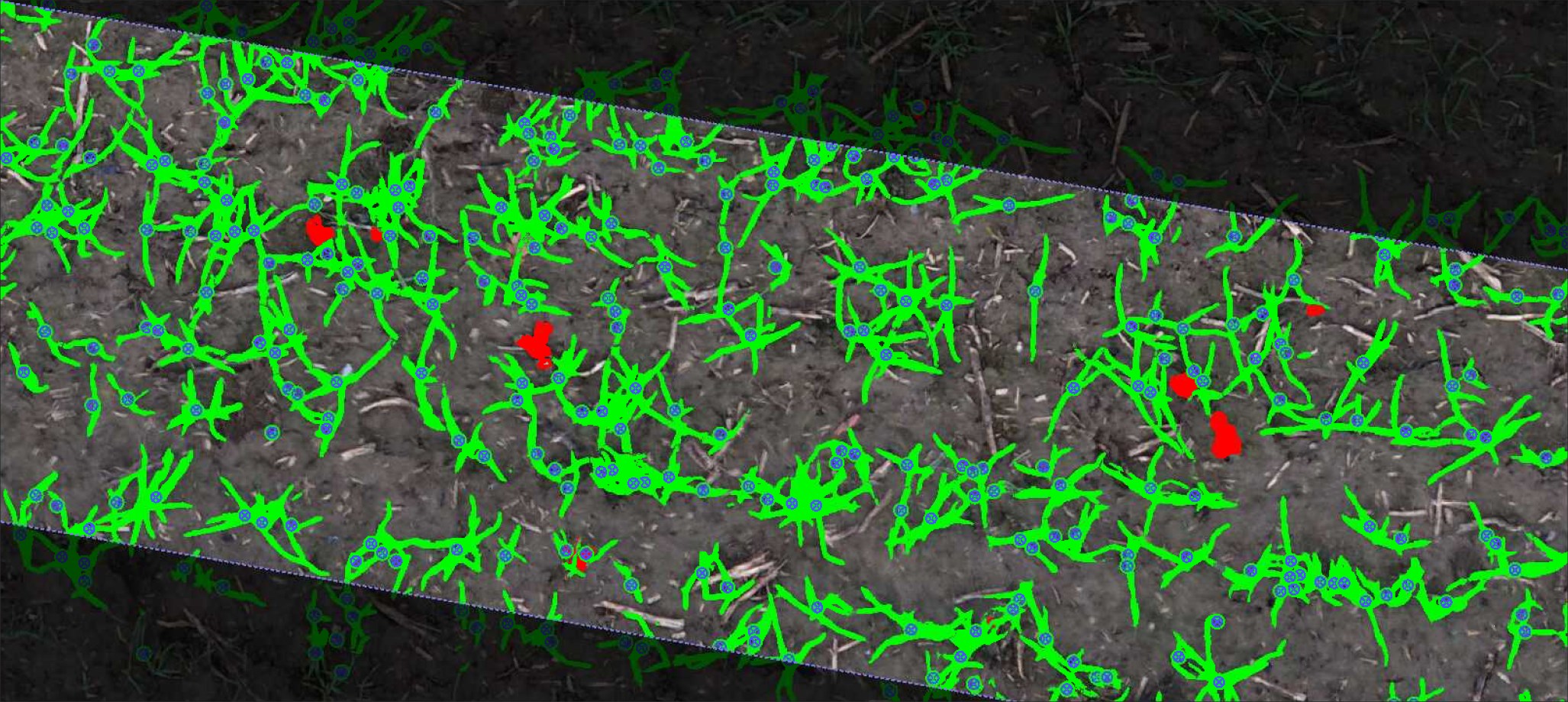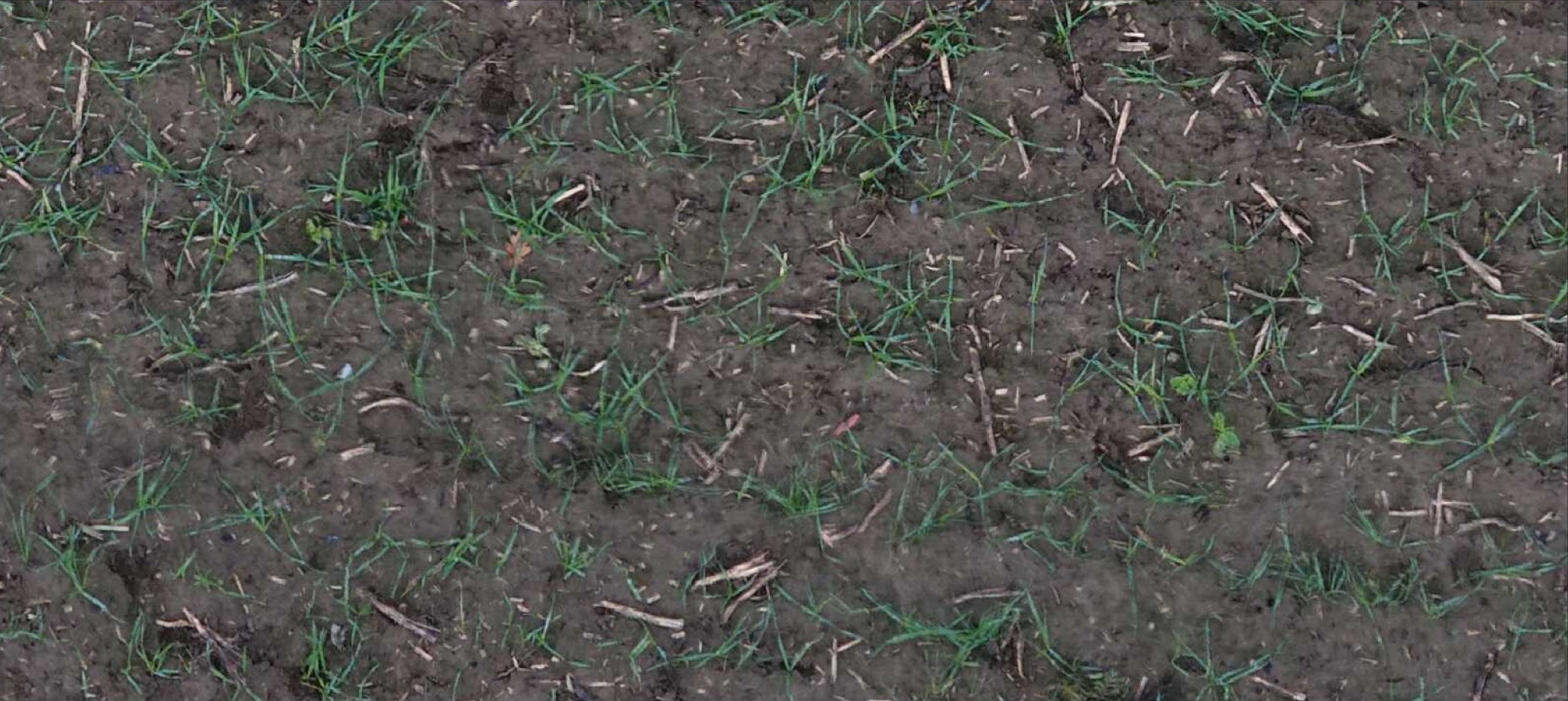Individual Plant Recognition in Cereals
Individual plant recognition in cereals
including common types such as wheat, barley, oats, and rye, is especially important for plant breeders, agricultural researchers, and farmers as a helpful assessment tool for evaluating varieties and their performance under local soil and climate conditions. Manual scoring of cereals in a plot is time-consuming and laborious but crucial for uncovering important characteristics throughout their entire growth. With the latest technologies such as drone and smartphone images, image-based scoring can be conducted, revealing characteristics such as coverage and the number of cereal plants per unit area (density). These methods enable simple and efficient plot-wise predictions for trials. Digital scoring throughout the season provides plant breeders with important insights into the quality of various cereal varieties under different conditions.
In addition to counting cereal plants, Pheno-Inspect also facilitates accurate size determination. This capability to capture variation in the number, size, and spatial distribution of plants is invaluable for agricultural research and plant production. These detailed data offer deep insights into the development of cereal plants and are crucial for assessing yield potential and variety performance.
The picture above shows the result of an AI image analysis in a wheat plot. Individual wheat plants (green) can be distinguished from weeds. Dicots (violet) and monocots (blue) are recognized independently.

one Software, one Workflow, One Solution for Digital Assessments

Why each plant?
The Importance of Plant Counting, Size Determination, and Variation Analysis
In modern agriculture and plant breeding, accurate data collection and analysis of plants play a crucial role. Methods such as plant counting, size determination, and analysis of variation within plant populations are indispensable for gaining informed insights into the condition and performance of crops. These techniques provide valuable information that is important not only for improving varieties and cultivation methods but also for optimizing yields and minimizing environmental impacts.
Plant counting allows for the precise determination of the number of plants per unit area. This information is crucial in assessing seed quality, germination rate, and the growth potential of a crop. Additionally, determining the size of plants provides key indicators of their health and development. It helps in identifying growth trends and making necessary adjustments in cultivation.
Analyzing the variation within a plant population is equally important. It reveals the homogeneity and heterogeneity of a crop, which is of great significance in breeding research and selecting robust varieties. Inhomogeneities may indicate varying growth conditions, disease infestation, or other stress factors that need to be addressed.
Integrating these methods into modern agricultural practices and research, supported by advanced technologies such as drones and AI-based algorithms, is revolutionizing plant breeding, agricultural research, and plant production. It enables more precise and efficient decision-making, contributing to sustainable increases in agricultural productivity and environmental conservation.
Pheno-Inspect has the solution
Digital Plant assessments
Essential as a tool!
Digital assessments play a crucial role in modern agriculture and plant research. They enable precise and efficient assessment of plants and field trials, which are essential for seed and variety development, crop protection, and fertilization strategies. Traditional methods of plant evaluation are often time-consuming and labor-intensive and can only provide limited amounts of data. This is where digitalization offers groundbreaking progress. With technologies such as drones, smartphones and advanced image processing based on artificial intelligence, each plant can be captured and assessed individually. This enables a comprehensive and precise analysis of large field areas and thus significantly improves the quality and informative value of field trials.
The use of digital assessments has several advantages: it increases efficiency by automating data collection, increases the accuracy of the data, and enables a georeferenced and detailed evaluation of test plots. These techniques can be applied to various crops and issues and open up new possibilities in plant research and agriculture. Our web-based solution for the automatic evaluation of exact and strip trials is an example of the power of digital scoring. It offers a user-friendly, integrated platform seamlessly integrated into existing workflows and enables comprehensive analyses across different locations and points in time. With digital scoring, we drive plant research and agriculture innovation to develop more sustainable and efficient cultivation strategies.



